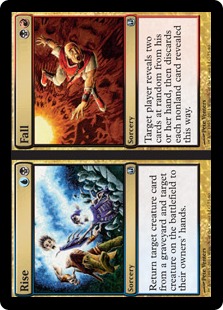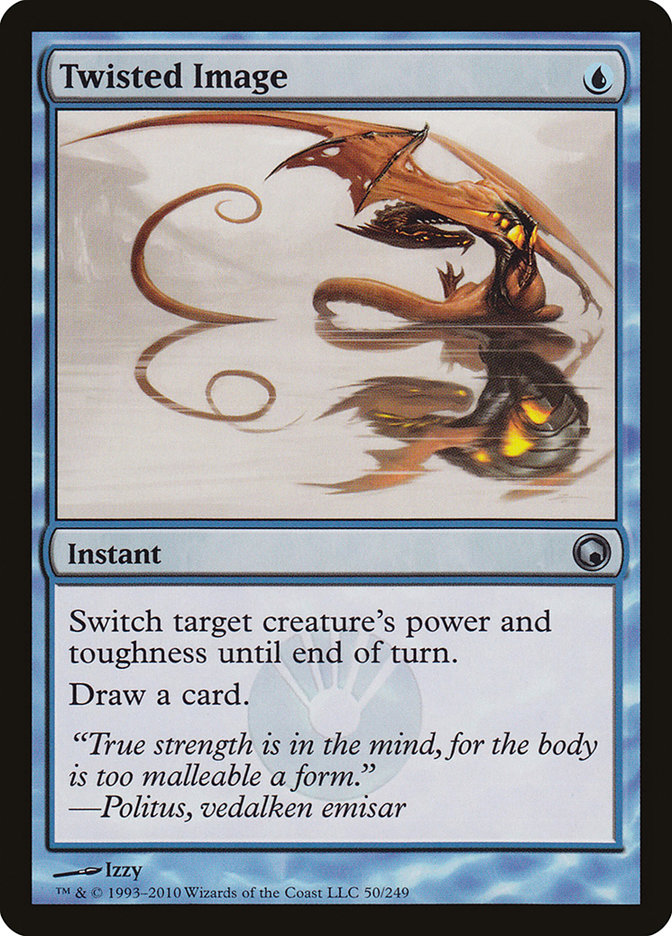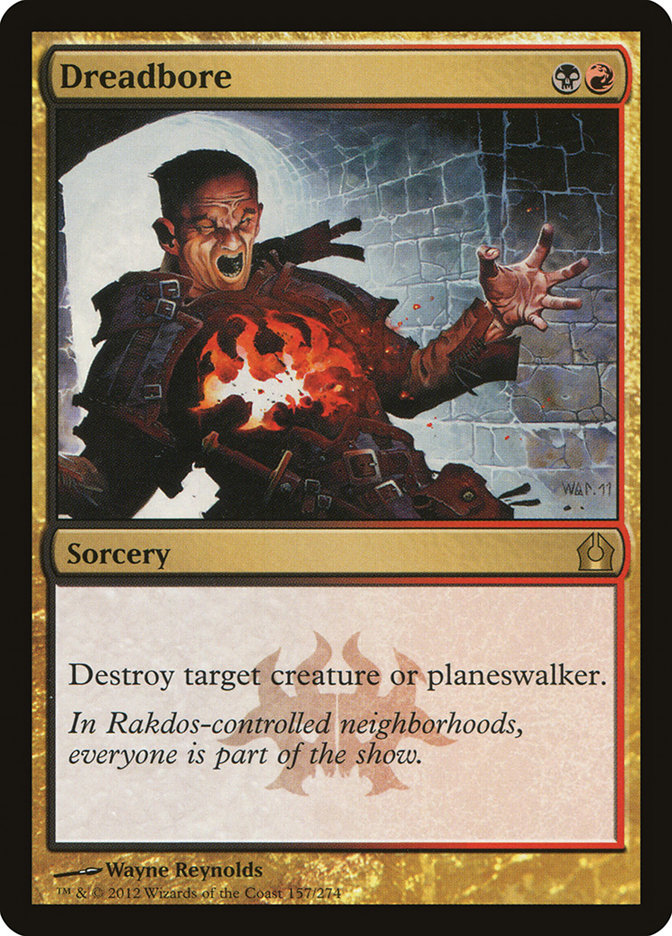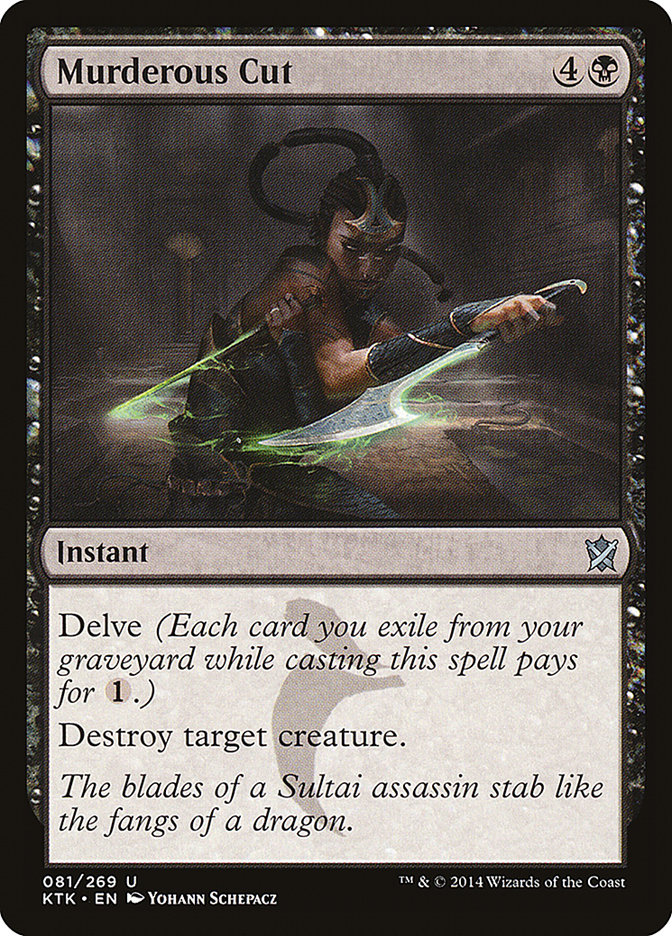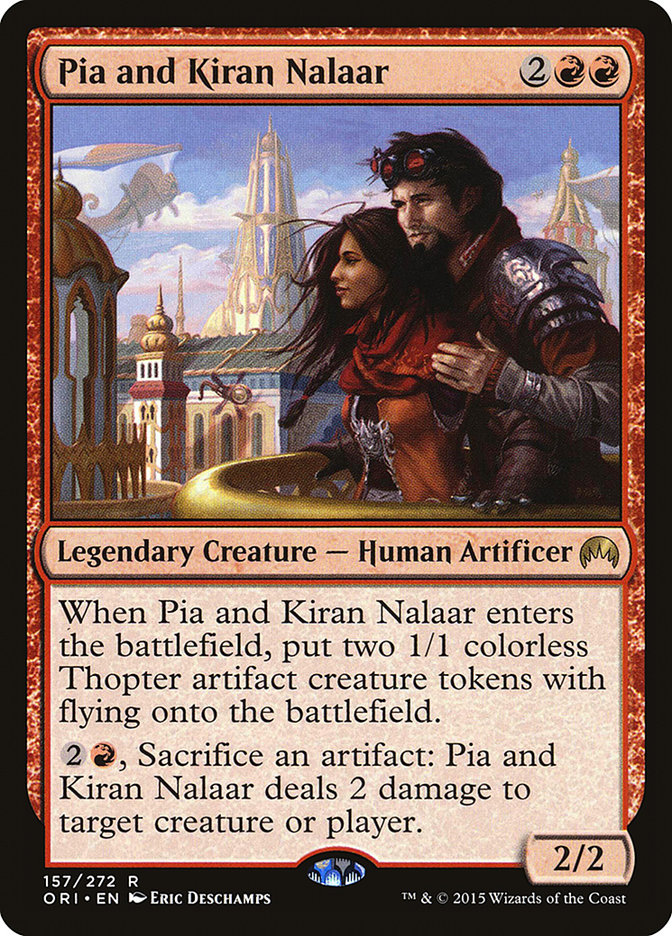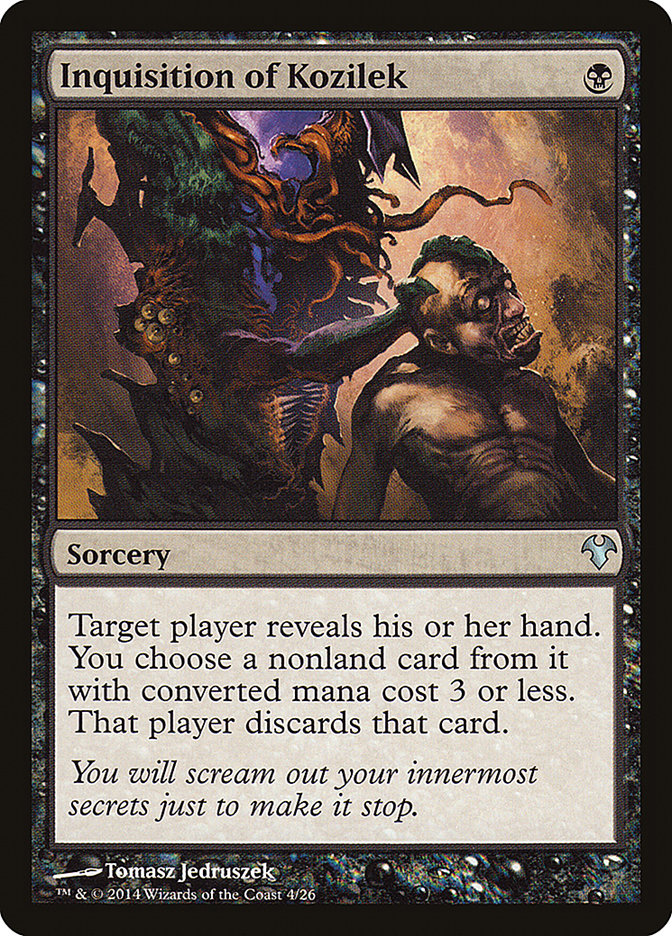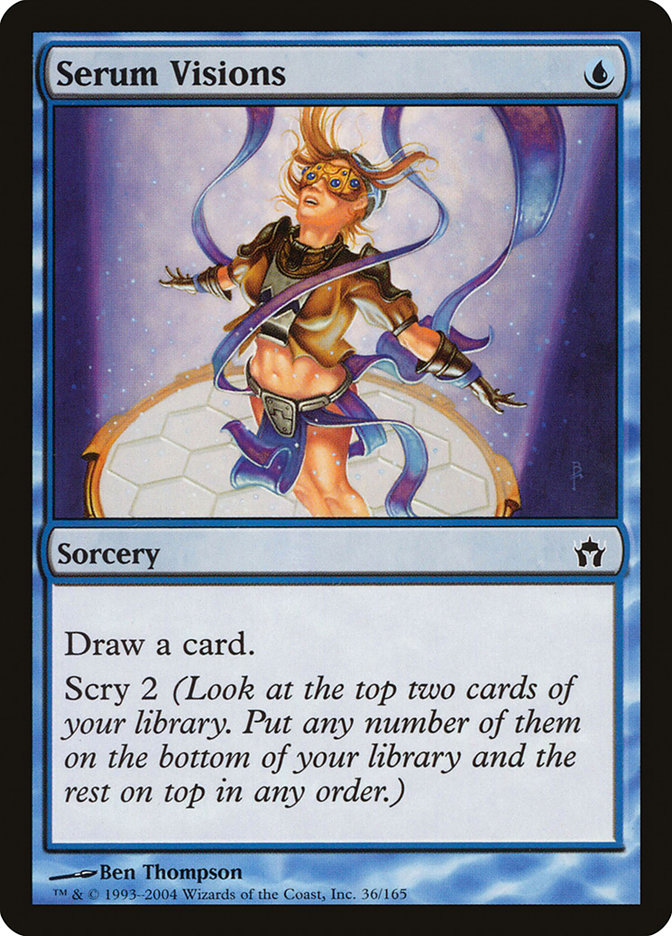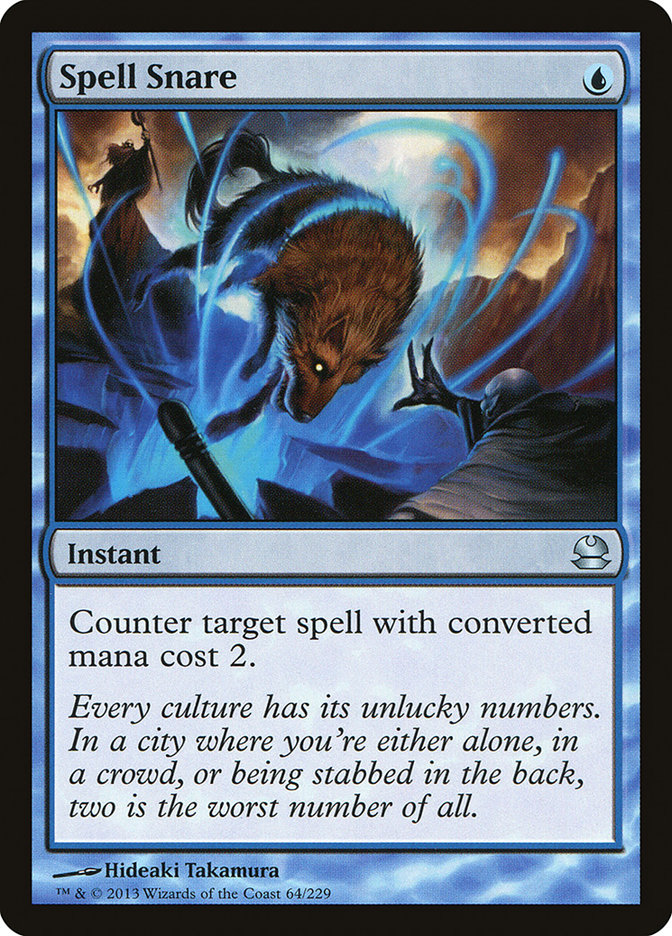
It wasn’t quite the called shot, but this interaction made things that much more interesting.
Creatures (13)
- 4 Snapcaster Mage
- 1 Gurmag Angler
- 1 Tasigur, the Golden Fang
- 4 Jace, Vryn's Prodigy
- 1 Pia and Kiran Nalaar
- 2 Hangarback Walker
Lands (23)
Spells (24)

I woke up at “This is too early” o’clock in the morning to go en route to Kirwan’s Game Store in northern New York. Not the worst drive, as I was
accompanied by three very awesome and supportive friends. The last thing I want is to be surrounded by players that always complain and say how much they
dislike things. I’m at the point in my life where I can’t spend time caring so much about that stuff. I want to hang out first, play Magic second, and the
people I’m around now are doing just that.
It’s also nice when we talk Magic too.
I knew I was playing this deck, as I wrote about how I was going to win the tournament two weeks ago. Of course, it was met with a lot of negative
reaction, but I understand that. It’s much easier to question the decisions of those who aren’t proven to the people that are questioning. It’s a great
thing that having something to prove to people that don’t matter is not even on my radar.
As I said in that article, I was bound to change some things here and there, but the core structure of the deck was going to remain the same. I want to
touch on the changes first before I revisit the main parts.
Playing No Countermagic in the Maindeck
Before, I had Remand. I’ve since cut it.
Why?
As I’ve put more thought and work into the deck, I’ve wanted to be more and more a Jace, Vryn’s Prodigy deck than a Snapcaster Mage deck. As I’ve wanted to
be more of a Jace deck, I’ve wanted to have less countermagic and cards that can only be used reactively. Remand fell into this category, but it wasn’t
without consequences. Remand was great when you were light on lands and wanted to continue finding them while also setting your opponent back half a turn.
I needed to find a suitable replacement for this, which I would wind up doing.
Retooling the Singletons
The deck contained a decent number of singletons, but all of them just felt like they were there without purpose. This isn’t what my vision was going in,
so I scrapped it and started over with the following:
Rise // Fall was on my radar, but I wasn’t sure exactly how effective it would actually be at, well, doing what it did. As it turns out, it wound up being
solidly serviceable at both jobs. Not spectacular, but just fine. A weaker Hymn to Tourach is still functional enough, and bouncing an aggressive creature
as well as keeping the momentum going via bringing back your plethora of multi-value creatures makes it well worth the slot.
This addresses the Remand problem I talked about earlier, which was drawing a card on the cheap. The big draw to this card is the expected rise in opposing
Jaces, but hitting things like Spellskite and Noble Hierarch is also a plus. It’s also worth having this over the third Thought Scour because of its
utility in semi-corner cases, especially now that our delve spells aren’t of utmost importance.
This, along with Twisted Image, were adopted from Gerry Thompson’s iteration of Grixis Control. The fact of the matter is that killing Jace at any point is
super important in mirrors, and having a cheap spell that does that, as well as killing Tarmogoyf, Liliana of the Veil, Karn Liberated, and opposing
Tasigurs is premium. Dreadbore is the most efficient tool at doing just that, as well as being easy on the mana.
The pressure to keep Murderous Cut as efficient as possible was alleviated a little bit more now that the need to hit Tasigur and Gurmag Angler is even
less pronounced. Terminate and Kolaghan’s Command are pretty obviously insane, but with the amount of flashing back we’re going to do over the course of a
normal, fair game, we realized that we had about one and a half too many of these spells collectively. Of course, you can’t cut half of a card, but what
you can do is modulate the effect when replacing what you’re cutting. One Kolaghan’s Command was replaced with the aforementioned Rise // Fall, and one
Terminate became a Dreadbore. All of this is taking place while keeping the focus of the deck in mind: doing as much as possible with as few resources as
possible.
The one card in the deck that goes against the focus of the deck, but it’s also the only card in the deck that stresses the one-for-one fest that midrange
matchups tend to turn into. There is synergy with Hangarback Walker, but you aren’t playing it for that reason directly. Liliana of the Veil has never been
worse against this deck, and Chandra’s parents makes things even worse for her, but the real reason you’re playing it is because it’s just an efficient
threat. In a deck that has difficulty turning the corner at times, Pia and Kiran Nalaar is one of the more solid ways of speeding things up. Not being hit
by Abrupt Decay is also a plus, and coupled with just how much pressure each creature can put on an opponent, throwing a threat that operates on a
completely different axis just makes life even more miserable for them.
Another Look at the Core
This deck is Shardless Sultai ported over to Modern, and if we draw that analogue, then Jace is Ancestral Visions, and Snapcaster Mage is Shardless Agent.
Continuing that analogue, Jace might, maybe, could be, better than Snapcaster Mage in this deck.
We’re essentially building this deck like a Jund deck without green. So without countermagic and strict reaction, Jace becomes increasingly versatile, and
the more options you present to your opponent, the higher the chance that your opponent could fall into a play that lines up favorably for you. Most
players think the inverse, where your chance of misplaying is higher when you have more options, but that’s also an inverse vacuum way of thinking. Having
a lot of things to do doesn’t necessarily mean that it’s going to be harder to find the right or wrong thing. There could be multiple things to do
that are all right, just as much as the opposite. Don’t limit yourself to one way of thinking. It’s bad for your health.
With Snapcaster Mage, it certainly plays a supplementary role here, and I would advise using it as such. I tend to block and Ambush Viper it in a lot more than I would in a lot of other decks. Don’t fall into the trap of trying to get the most value of every turn with this particular build.
Your resources are meant to be used, and if you have to preserve your live total early, do it. If you’re against Scapeshift and you want to be aggressive,
flash it in on turn 2 and start attacking. You have a ton of ways to regain the value back later on because of the fact that Jace is in your deck, so don’t
shy from being bold so easily.
In a Similar Vein, Gurmag Angler Might be Better than Tasigur
Tasigur is obviously powerful, but the issue is that it really doesn’t help you do anything more than you already do. The worst card to get off of
Tasigur’s activated ability is, more often than not, a cantrip, especially since you kind of have to use said cantrips much more aggressively than in other
blue midrange decks. Now, this isn’t a reason to not use his activated ability, but it is a reason to want the fifth power over it. Tasigur based
boardstates require another card to break through, but Gurmag Angler breaks that, as well as most Tarmogoyfs. If you’re going to want to turn the corner
quickly, then 5/5 is so much more important than 4/5 for sure. Does this mean that you should cut all of your Tasigurs? Absolutely not. That said, the
split is preferred for now.
Obviously…
These need no explanation, but I’ll take an excerpt out of my article two weeks ago on Inquisition of Kozilek:
“Inquisition of Kozilek is mostly better than Thoughtseize unless you’re expecting a lot of big-mana combo decks or really care about hitting Splinter
Twin. The format has gotten much more aggressive as well, so not only does the two life matter, it’s often the difference between being in the game and
flat-out losing, especially when decks like Merfolk and Zoo are already strong against you in game 1.”
Hangarback Walker. Yep. Still great.
When you’re under offensive pressure, it has your back. When you need to turn the corner, it has your back. The longer the match goes, the more it will get
out of control. If it isn’t exiled, it’ll always come back eventually. The problem will linger from turn 2 onward, and when Pia and Kiran Nalaar show up to
the party, having the option to break it open to keep the juices going will really get the party started. When everyone is trying to one-for-one you, you
get showered with lemons.
And when your god gives you lemons, your opponent goes to game 2.
No, seriously, how does Jund beat this card with everything else going on in your deck?
The card isn’t the best card in the deck, but it’s an important tool in your shed. The amount of synergies that Hangarback Walker incidentally becomes a
part of is vast. To put it in perspective, I’ve been playing this deck for well over a couple of months, and I’m still finding new things to do to not only
maximize the card but everything that surrounds it. When coupled with your other inherent options, aggressive decks like Zoo and Merfolk become much more
manageable, as it’s easier to prioritize the cards that matter because your life total is preserved more easily. It plays nicely with Kolaghan’s Command
and makes opposing Kolaghan’s Commands pretty underwhelming. Dragging most two-for-ones down to about half a card is something not a lot of cards can claim
to do in the first place, and there really isn’t a way to profitably deal with it that most players are playing. Path to Exile is at an all-time low, and
even if it weren’t, if they’re spending that card to get rid of your 1/1 Walker and give you a land, that’s very much a win for this deck, because your
other cards tie in with the land you got anyway.
I get it, you still may not be sold after playing three pre-boarded games against Burn or Amulet Bloom and never getting lucky, and that’s okay. As long as
the format doesn’t get hostile toward Kolaghan’s Command, Hangarback Walker will be very powerful if you’re looking to grind.
The Notable Lands
Two Creeping Tar Pit is the gameplan when things get really, really grindy. It’s fine to have a couple of lands that enter the battlefield tapped since
your deck, by nature, is so low-end. You can also get away with a couple of more than usual since the demand for having Remand is non-existent. Most builds
play the full set of Blackcleave Cliffs, but I’d much rather have an untapped, non-painful blue source that casts both Inquisition of Kozilek and my blue
cantrips. Darkslick Shores meets all of these requirements for the role I’m looking for. A little tension may have been created because of this change, so
Sulfur Falls became the sub for the fourth Blackcleave Cliffs to further push the need for blue and red while leaning more on Darkslick Shores to pick up
the slack for needing black early on.
No Double-Colored Spell in the Deck
The only exception being Pia and Kiran Nalaar, but the power level of that card allows it to break that rule. Before you begin to type out your comment
about Shadow of Doubt, hybrid spells aren’t really akin to that rule either. Dreadbore is the hallmark card of this example, and will continue to be. Mana
considerations are of utmost priority because I want to be able to cast my spells all the time. This is also important for straining effects like Blood
Moon, Choke, and Spreading Seas.
“How Does Your Deck Beat Blood Moon and Choke?”
There are four maindeck ways to beat Choke, and thirteen maindeck ways to beat a Blood Moon. If you’re playing against Choke in the first place, then
chances are their deck is very weak against Jace.
“How Do You Beat Affinity?”
When not many people realize the power of Jace, it’s very easy to make these assumptions. I’d refer back to my philosophy of not limiting yourself to your
own way of thinking.
“Good Luck Against Fair Decks!”
At States, my only loss in the Swiss was in round one, to the only other player in the tournament playing Grixis Control, and someone who was much more
experienced than me at playing control in general, Sir Myles Housman. The rest of my matchups were against Ad Nauseam, Merfolk, Jund, Zoo, and Burn, in
that order. If you want more unsolicited and meaningless confirmation bias, I met the White Ranger from Power Rangers in real life, so obviously he’s the
best Power Ranger.
Again, Jace is much more powerful than many are giving it credit for. Yes, your unfair matchups aren’t the strongest, but there are other decks you can
play if you want to beat those. If you try and beat everything, you’ll get beat up.
Actual Weaknesses: Enchantments That Actually Do Things
This includes, but isn’t limited to: Keranos, God of Storms, Hive Mind, and the G/W Hexproof deck. As I said before, if you really care about beating these
cards, throw some Annuls or additional Thoughtseizes in your sideboard, or just play a different deck. Grixis has always been weak to these types of
effects, and going far out of your way to remedy that is not something I’m a fan of. Maximize your strengths, and if your weaknesses aren’t reasonably
remedied, then forget them.
If You Really Want to Play Countermagic
Spell Snare is probably the best candidate, as it really does handle a metric ton of problems that can arise, especially against combo decks and aggressive
decks. Countering Jace and Snapcaster Mage is also handy, while being the actual cheapest in cost. I’m cool with having at least one, probably two of these
in the maindeck. I wouldn’t know what to cut, however, since, like always, it depends on what you think you should prepare against.
How to Build Your Sideboard
Figure out what weakness you feel that you need to shore up and add cards that line up with that and with a number of cards you’re willing to take out. I
have a more linear approach to sideboarding in Modern because of how powerful the sideboard cards really are. Keep in mind that, as I just said, you
shouldn’t go that far out of your way to answer a weakness that’s a huge glare but not expected to be exploited very often, if at all. It’s also not a good
idea to try and cover the approximately twenty different Modern decks that can reasonably win a tournament. Sometimes, changing how you play the deck after
sideboard is more important than what your sideboard contains with this deck. If you’re playing against Grishoalbrand, stop being scared of dying so quick
and put that clock on! This was part of the reason why I opted not to include Blood Moon in my sideboard for this tournament. I told myself that if I were
to play against Amulet Bloom, then I’m fine losing to it because of how much of a downswing they’re on. Molten Rain felt like the more appropriate choice
because of Jund and the expected rise of G/R Tron (which was a correct prediction, as most of the field was midrange decks with black in it), and
creature-lands in general were a little uncomfortable for me. I ended up playing Amulet Bloom in the top 8, and Molten Rain worked wonders for me, but I
don’t think either card would have helped there (though that isn’t a reason to play one over the other). Additionally, you have to consider what cards are
actually important in the matchups you’re playing in, or you’re going to lose no matter what you include.
Going Forward
The last couple of times I went to Dallas for the Open Series, I noticed quite a bit of various Twin and Jund decks at the Premier IQs. This isn’t a
certain thing, however, and it doesn’t give me much to go on when it comes to making any drastic changes. But I urge you to get a grasp of the deck before
doing anything major. You won’t know how to build your house if you mess with the already established foundation.
So practice those five games against Jund, go 3-2, and determine that this deck is garbage and play something else.
I didn’t quite call my shot, but I think many players more skilled than I very much could call their own if they took the helm on the Fort Worth strip.


